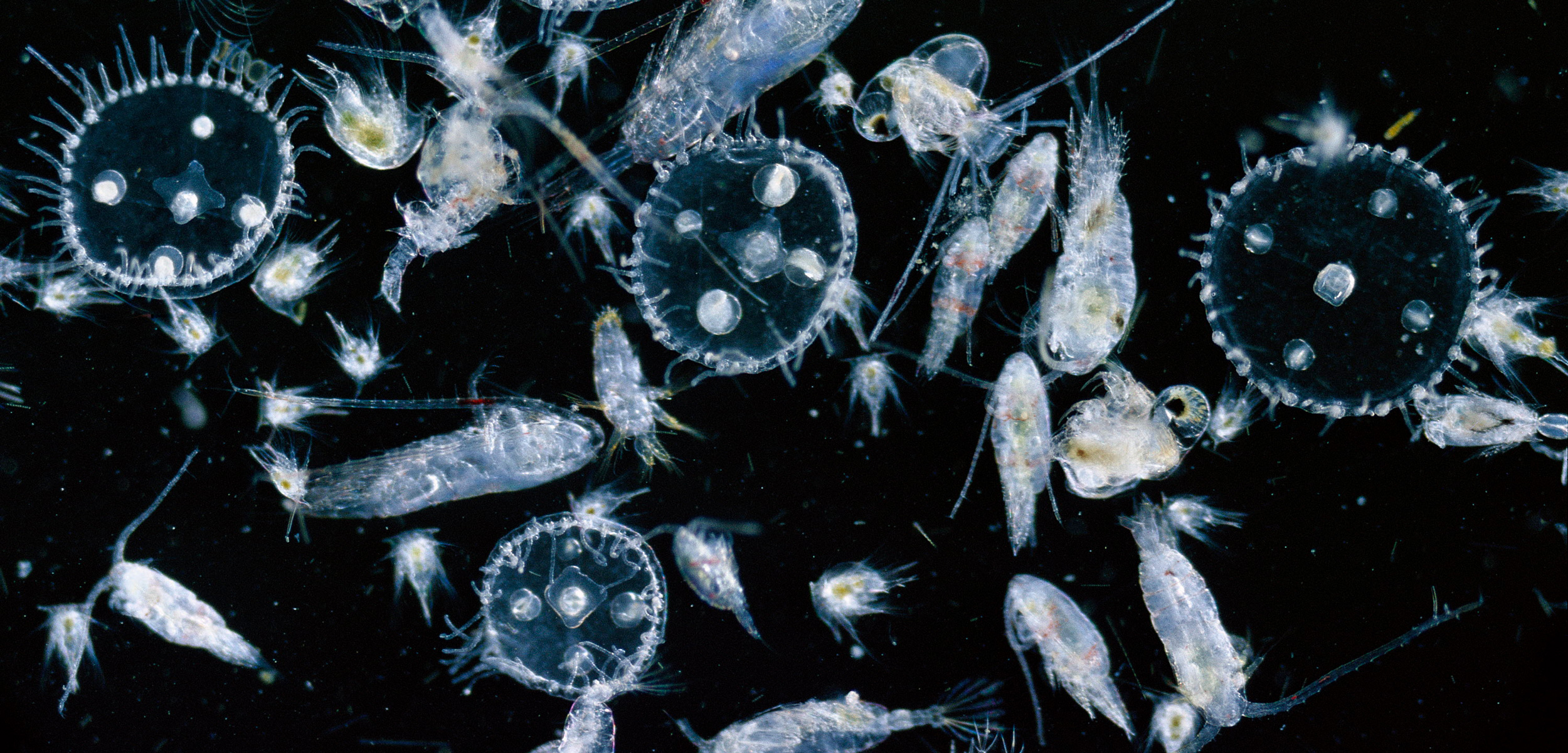Diving Deep with Plankton from the Comfort of the Lab
A new device gives scientists a better way to study the migrations of microscopic plankton.
Article body copy
Scientists at California’s Stanford University have fashioned an elegant device that allows them to watch microscopic plankton traverse the ocean’s depths—no wetsuits needed!
The word “plankton” comes from the Greek planktos meaning wandering or drifting. But plankton don’t move as aimlessly as their name suggests. Every day, for example, plankton participate in a great migration, with trillions of the tiny sea creatures rising to the surface at sundown and descending into the depths at daybreak. This daily commute has profound consequences for the Earth’s biosphere; plankton’s movements are key to processes that transport carbon to the deep ocean and regulate the flux of nutrients in the water.
“Plankton make Earth habitable. There is virtually no life in the ocean that’s independent of plankton, and they’re hugely important for human survival,” says Susanne Menden-Deuer, an oceanographer and plankton ecologist at the University of Rhode Island who was not involved in the development of the new device. Yet we know very little about the large-scale migrations that they undertake, or the mechanics of their movements in the water, she says.
Following the organisms on their long vertical journeys in real time—in situ or in kilometer-long tubes in a lab—is out of the question.
Stanford bioengineer Manu Prakash and his collaborators found a clever workaround that makes it possible, for the first time, to track and observe the movements and behaviors that power these vertical voyages.
Described in a recent study, their solution—which they call the Gravity Machine—is a wheel-shaped tube filled with water that acts as an endless aquatic hamster wheel. The organisms swim inside with a tilted microscope positioned to observe them. As the Gravity Machine turns, they move as though swimming up or down against the water’s flow, just as they would in the ocean under the influence of gravity.
The apparatus also allows researchers to create a virtual environment for organisms in which they can change important parameters, such as the light conditions, says Deepak Krishnamurthy, a graduate student and lead author of the study.
The team has used the device to examine planktonic larvae of bottom-dwelling marine invertebrates such as the Pacific sand dollar, the purple sea urchin, and the bat star, a type of sea star. Their investigations reveal that the creatures employ vastly different swimming techniques.
The biggest surprise, according to Krishnamurthy, came from a species of diatom, a single-celled alga with no visible appendages to aid swimming. “One moment, it was floating along like a bubble, and the next moment it was sinking like a stone,” he recounts.
Nicole Poulton, a phytoplankton ecologist at the Bigelow Laboratory for Ocean Sciences in Maine who was not involved in the research, says the Gravity Machine can help validate the hypotheses scientists have about how planktonic organisms migrate. What’s more, she adds, it gives scientists a way to look at individual organisms and watch their behaviors as they move. For example, the study found that bat star larvae cannot munch on the move—they have to pause swimming to feed.
Poulton and Menden-Deuer are excited by the possibilities the instrument offers in investigating the cues that affect plankton mobility.
“You can turn specific cues, like light or nutrients, on and off, and study what the response would be. Making these kinds of controlled observations in the open ocean is impossible,” says Menden-Deuer.
Understanding what kinds of cues the organisms take from the environment and how they respond could allow scientists to predict when and where these migrations occur, she says.
For their part, Prakash’s team is working to add more environmental or chemical cues that marine organisms would normally encounter to make them feel truly at home in the lab.

